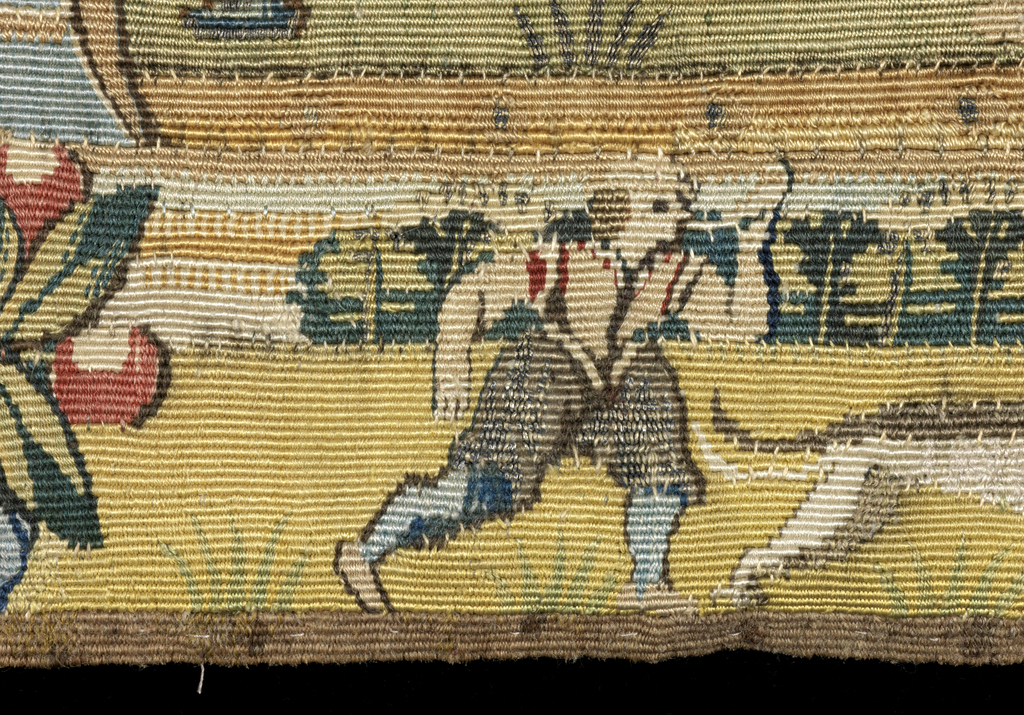Tapestry was always expensive, not just because it was relatively slow work but because its creation involved many people: dyers, spinners, designers, weavers and of course the wool producers and merchants.
Cost increased when silk thread was used, for example to highlight folds of clothing. It became still more costly if gold or silver-wrapped thread was introduced.

These kinds of thread added to the lustre and shine of the finished piece and made it glint and shimmer in a candle-lit room.
Because it was costly, tapestry indicated wealth and status. Most of the information we have about purchasers comes from inventories – the room by room listing of a deceased person’s possessions made for probate purposes. They show that very few noble households were without several large sets of four or more pieces. It was also a status symbol for the less well-off. Their inventories show that they were often content with much smaller items like a purse or a set of cushion covers.
Such documents do not often describe the subjects, colours or sizes of any tapestry-woven items, large or small, and only sometimes reveal that cushion sets might be made up of one ‘long’ and five ‘short’ or ‘square’ cushions. Occasionally there is an indication of their quality and size, sometimes given very specifically, right down to quarter inches (7 millimetres). Catherine of Aragon, first wife of King Henry VIII, owned a long cushion 38 inches long (96.6 cm) and several short cushions that measured 19 inches square (48.2 cm).
Just occasionally a contract between a patron and a supplier survives. This usually specified the subject to be woven, the number of pieces and their sizes, the quality of the thread to be used, a delivery date and of course a price. Sometimes it included penalties for late delivery, and it might also name the master weaver and even the designer.




